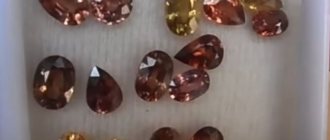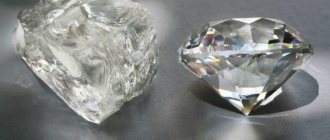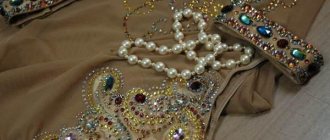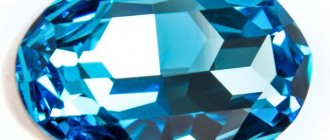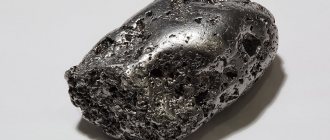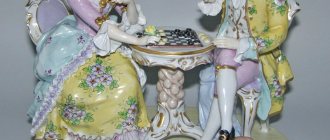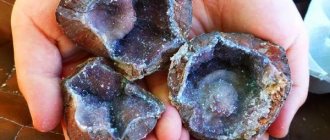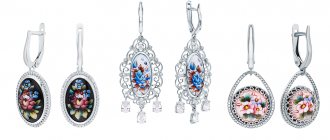Childhood and youth of Daniel Swarovski
Daniel Swarovski at the age of 18.
The founder of the Austrian company Swarovski was born on October 24, 1862 in the city of Georgenthal in the north of mountainous Bohemia. It was this part of the Austro-Hungarian Empire that at that time was famous for the production of the famous Bohemian glass.
Daniel's father Franz Anton Swarovski owned a glass workshop and shop that produced and sold costume jewelry, hairpins and other glass accessories. Since childhood, Daniel learned the craft from his father and helped him in the family business. But due to high competition, the production of glass attributes did not bring much profit.
The Swarovski brand might not appear, but instead we might know the famous violinist Daniel Swarovski.
The fact is that the young man was seriously interested in playing the violin and dreamed of becoming successful in this area. But his musical career did not work out, since Daniel left to study engineering.
In 1880, Daniel's father sent him to study in Paris. There he received the education necessary to become an engineer. In 1883, Swarovski visited the International Electrical Exhibition in Vienna (Internationale Electrische Ausstellung) . Here he became acquainted with the inventions of Thomas Edison and came up with the idea of using electric current to grind glass.
Invention and patent receipt
Daniel Swarovski with his invention
In 1892, Daniel Swarovski completed the construction of an electric grinding machine and received a patent for it.
The grinding machine opened up great prospects for the development of an entrepreneur’s own business, because it made it possible to process faster and with much greater accuracy than with manual work.
Thus, the first stone was laid in the foundation of the future company.
Changing consumer market trends
The Swarovski family's conflict coincides with changing consumer trends. Nowadays, buyers prefer to purchase goods online. Consumers are ignoring physical stores because it is easier to make a purchase using technology. The Internet has come a long way from print advertising, tailored promotional events and other methods that were popular just a few years ago (online shopping has become especially popular during the pandemic). In addition, some people prefer fast fashion, which is not based on quality and practical items that can serve and delight the buyer for many years. Now is the time for rapid action, which involves changing relatively cheap outfits with original new designs.
Opening of the Swarovski company
Daniel Swarovski (second from top right) with partners Armand Cosman (third from top right) and Franz Weiss (second from top left).
In 1895, Daniel Swarovski, together with his business partners Armand Cosman and Franz Weiss, founded a company producing crystal products. It was originally called Kosman, Swarovski & Co.
Business partners were not chosen by chance.
- Franz Weiss is the brother-in-law of Daniel Swarovski.
- Arman Cosman is a wealthy acquaintance from Paris who helped the company with start-up capital . At that time, Paris was the center of the fashion world, and Cosman, in addition to financial resources, also had an extensive network of contacts and an excellent reputation .
Daniel Swarovski, wife Marie Weiss and her brother Franz Weiss with children from both families.
Swarovski had three sons: Fritz, Alfred and Wilhelm. The partners rent an old factory, but not in Bohemia, but in Austria, in a small village called Wattens (Tirol). They chose this area for several reasons.
By 1900, Wattens had a population of 832.
1900, view of the village of Wattens from the station.
- Low competition. In Bohemia, competition in glass production was high, so opening a factory there was not the best idea. Plus, Swarovski was afraid that competitors would steal his designs. There were no glass workshops in Wattens.
- Energy saving. Automated crystal processing requires a lot of electricity. And near the plant in Wattens there was a hydroelectric power station with cheap electricity.
- Resources. The Tyrolean mountains, near which the factory was located, are rich in natural resources necessary to create Swarovski stones.
- Location of the settlement. The village of Wattens had its own station, through which the Vienna-Paris train passed. It was to Paris that the first samples of Swarovski jewelry were sent.
Soon the demand for crystal jewelry increased, and entrepreneurs had to expand production. In 1900, Kosman, Swarovski & Co bought the plant, hydroelectric power station and land for further expansion. In the same year, the company changed its name to the familiar one, Swarovski.
The same plant that was leased.
Swarovski company logo
1899 advertisement for Kosmann, D. Swarovski & Co., featuring the edelweiss flower in the logo.
Initially, the company's logo depicted an edelweiss flower . It was used as a symbol of the Alpine Mountains, near which Swarovski production was located.
Various versions of the Swarovski edelweiss, circa 1899 to 1980.
But not everyone knew what kind of flower it was and how it was connected to the company. Therefore, in 1989, the logo was replaced with a more well-known image. The brand's emblem is a swan. Why he?
The swan was chosen as one of the most elegant and majestic animals, it shares the main attributes with Swarovski crystals: beauty, elegance, purity and strength.
In addition, the swan is famous almost all over the world and is very positively received in many cultures.
1989, first swan logo
Fall in demand
Rapid expansion brought the business from a small town in Austria to the world market. But then it turned against the company as changing consumer trends became overwhelming for the family. Its members are accustomed to huge profits, but now they are forced to be content with the crumbs that they manage to get from empty boutiques in shopping centers. The coronavirus has only accelerated the decline as buyers' ability to pay has fallen. In addition, very strong competitors have emerged (for example, China). They offer the same interesting items for a fairly low price (compared to Swarovski products). Few people want to buy trinkets that cost at least a hundred dollars, since there are similar offers nearby for ten.
What is unusual about Swarovski products and why did they become popular?
Daniel Swarovski wanted to make luxury jewelry accessible to everyone. To do this, he used crystal that imitated precious stones.
Swarovski has developed a secret formula for producing crystal. Due to its special composition, the crystal was transparent, sparkling and resistant to mechanical stress.
Crystal is glass with the addition of lead oxide. It is lead that makes glass look like diamonds.
But the main thing is not even the secret of producing Swarovski crystals, but how Daniel positioned his products. He did not hide the fact that his crystal products have nothing to do with diamonds . But at the same time, Swarovski stones could not be put on a par with cheap jewelry, since they were significantly superior in quality to competitors’ products.
As planned, the company's products first gained popularity among the middle class of the population, and later Swarovski crystals were also appreciated by members of the European nobility.
Daniel Swarovski was able to gain a foothold in the market because he offered consumers an ideal balance between price and quality - Swarovski rhinestones were not only not inferior to diamonds in beauty and brilliance, but were also much cheaper. Status, luxury and prestige could now be achieved by many.
This is not the first time in history that a person has tried to counterfeit precious stones. In the 18th century, Georges Frédéric Strass , and it was thanks to him that the word “rhinestone” appeared.
His artificial stones were in demand both among ordinary people and among those who lived at the court of the French king Louis XV. Straz was also awarded the title of “Royal Jeweler”.
Despite all this, he failed to create a company that the whole world would know. And there was no one to continue Straz’s work.
Swarovski Plastic Trimmings Technology
A still from the film “Blonde Venus” (1932), in which the famous actress Marlene Dietrich appeared in jewelry and a suit with Swarovski stones.
In 1931, the company released flexible plastic ribbons with crystals woven into them, which were easily sewn onto fabric. Now Swarovski shone on dresses, shoes and bags. This technology was another reason why the Austrian brand became successful.
The new product was especially appreciated by media personalities. From time to time, Marilyn Monroe, Marlene Dietrich, Audrey Hepburn and others appeared in clothes with Swarovski crystals.
1962 celebratory concert in honor of John F. Kennedy's 45th birthday. Marilyn Monroe performed the song “Happy Birthday” in a dress decorated with 6,000 Swarovski crystals.
Stones from Swarovski were used in their work by such famous fashion designers as Cristobal Balenciaga, Coco Chanel and Christian Dior. Swarovski products have also been worn by heroines of various films.
The attention of celebrities has made the Swarovski brand even more popular, and the company's accessories have become trendy.
Robert Buchgauer's plans
Despite the fact that the products are still in demand, their price, which averages one hundred dollars, does not suit the company. The executive director proposes to refocus the company and make its products more original and high quality. Since China and Egypt offer cheap products that are affordable for almost all consumers, Swarovski should start a different policy. You need to make expensive things that will be in high demand among rich people. Fewer products will be produced, but profits will be at the proper level, and perhaps more than expected. If this is not done, the company will have to constantly reduce prices, and the enterprise will be on the list of unprofitable ones. The reformatting process will take at least two to three years.
Continuers of the work of Daniel Swarovski and their contribution
Daniel wanted to make the company a family affair, and he succeeded. Since childhood, the sons helped Daniel in his work, and later took part in the development of the company.
Now the business is managed by the fifth generation of family members . The Swarovski company remains non-public and has no plans to go public, and all its shares are distributed among more than 60 family members.
Daniel Swarovski died at the age of 93 in 1956. The head of the company was the grandson of the founder - Manfred Swarovski . In connection with such changes, the family business was predicted to undergo rapid decline and ruin, but this did not happen.
Manfred Swarovski
Manfred Swarovski turned out to be a worthy successor. He first developed a technology for producing colored crystals . , the Aurora Borealis coating was invented - a technology for vacuum deposition of metal particles onto crystals, creating the effect of a rainbow glow.
The next head of the company was the great-grandson of Daniel Swarovski - Gernot Langes-Swarovski . He led the family business for 35 years, during which time the company's key financial indicators showed the greatest growth.
Gernot Langes-Swarovski
Now Swarovski is headed by the great-great-grandson of the founder of the crystal empire - Robert Buchbauer .
Robert Buchbauer
Brilliant business
The Swarovski company is known almost all over the world. Fans of bright crystals have seen many sparkling objects of extraordinary beauty, created by the skillful hands of experienced craftsmen. Inlaid fountain pens, cases for mobile phones, frames for glamorous watches, sunglasses with original spikes, jewelry - all this is the fruit of the work of designers and manufacturers. All these products delighted people all over the world, as well as the small town of Wattens in the Austrian Alps, where Swarovski is based.
Bored with work, no promotions: wait for a resume or leave
Poverty changes reactions to many things: how money affects our emotions and brain
Be a Generous Idea Generator: Tips for a Manager to Become a Better Leader
Why the secrets of Swarovski have not yet been revealed
Svetlana Belova, managing director of Swarovski's Consumer Goods Business division in Russia, believes that Swarovski has no direct competitor. The company produces premium jewelry without the use of precious metals. Other manufacturers in the costume jewelry segment either use gold, silver, and so on, or their products do not reach the premium title in terms of quality.
It turns out that the company produces unique products, and this despite the fact that Swarovski has existed for 126 years (as of 2021). How does the company manage to keep its secrets for such a long period? There are several assumptions.
- Destruction of information and equipment. After the release of collectibles, the company destroys all relevant documentation and all tools used so that no one comes closer to solving the technology of making Swarovski crystal.
- Low staff turnover. People at Swarovski factories work in entire dynasties. And all because the company not only complies with regulatory labor safety requirements, but also exceeds them . Also, plant workers can receive either a mortgage at a low interest rate or rented housing for a small fee. All this protects the enterprise from espionage.
What else does Swarovski AG do?
In addition to the production of crystals, the company is engaged in other activities, the products of which are also in demand among consumers.
- Production of abrasive and cutting materials. The company Tyrolit, which is engaged in this activity, is part of the Swarovski AG association. Tyrolit was founded by Daniel Swarovski in 1919.
- Production of optical instruments. This activity has been carried out by Swarovski's subsidiary Swarovski Optik since 1949. It produces binoculars, spotting scopes, rangefinders, optical sights, and night vision devices. The most famous customer of Swarovski optical products is the Austrian Armed Forces.
- Production of reflective elements. Founded in 1950, Swareflex creates innovative solutions that improve road safety through modern lighting systems.
- Production of lighting devices. Since 1870, the production of crystal chandeliers and lamps has been carried out by a subsidiary brand of the Austrian company - Schonbek.
Swarovski logo update
In February 2022, the company unveiled a new brand identity, which was created under the leadership of Swarovski creative director Giovanna Engelbert.
In the new logo, the swan has changed its position and is ready to take off.
The swan has been turned to face the new direction of the brand and now has a streamlined shape with an elongated neck. A candy-like octagon envelops the swan, a reminder of the brand's craftsmanship.
On the left is the logo before the update, on the right after.
How the company helps people
To succeed, a person must think not only about himself, but also about others. The founder of the company, Daniel Swarovski, was convinced of this. of the Swarovski Foundation in 2013 .
The foundation's mission is to advance legacy by supporting philanthropic initiatives and organizations working in three areas: promoting culture and creativity, promoting human empowerment and preserving the environment.
Swarovski has also been developing the Waterschool program since 2000. Through this program, the company helps those in need gain access to clean water and teaches children to conserve it.
In 2022, Netflix released the documentary “Waterschool: Swarovski Water School,” which tells how the water school program changes people's lives.
Museum "Swarovski Crystal Worlds"
In 1995, to mark the company's 100th anniversary, the Swarovski Kristallwelten (Swarovski Crystal Worlds) museum . It contains many attractions that are made from Swarovski crystals.
The building also houses the world's largest Swarovski store, a restaurant and a collectors' lounge.
The museum itself is located underground, but the entrance is located on the surface and is made in the form of a giant's head. According to the creators, everything that can be seen in the museum belongs to this giant.
Swarovski Crystal Worlds Museum: Entrance
Modern Era
In 2000, Swarovski introduced the Crystal Core Pearl, combining the weight, texture and brilliance of a natural pearl with the quality of a Swarovski crystal. Swarovski continues to collaborate with fashion designers and architects to innovate and create new designs that expand the possibilities of crystal design. Swarovski is now returning to its roots by reintroducing the Edelweiss shape.
Conclusion
Daniel Swarovski came up with unique technologies and recipes that allowed him to surpass his competitors. He made crystal jewelry a luxury and a fashion trend.
Generations of the Swarovski dynasty are still reaping the benefits of the company's inventive founder, who made a fortune selling beautiful, high-quality glass. Is he a genius or a fraudster, or both – it’s up to you to decide.
Was there something you didn’t like about this article, do you have anything to add, or did you find an error? Be sure to write about it in the comments. Not a single comment will be left unattended!
Future perspective
Robert Buchgauer is pushing for change. But in order for them to happen, he needs voting support when resolving the issue. Whether the executive director will be able to convince his relatives and colleagues is unknown. Whether compromise decisions will be made, everything will remain at the same level, or tough measures will be taken also remains a mystery. We will monitor developments and hope that we will be able to overcome difficulties and delight customers with new sparkling products.
Found a violation? Report content

